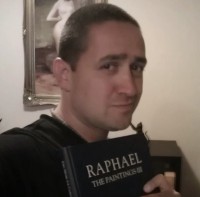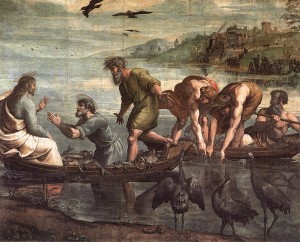 I first encountered Hasan Niyazi’s blog Three Pipe Problem in May of 2010 after he emailed me through the contact form. He said lovely things about my blog, a kindness that I would come to learn was entirely characteristic of this generous, open-minded, curious and warm man, and asked me for feedback on his own even though after less than six months of posting he already had far more traffic than I did.
I first encountered Hasan Niyazi’s blog Three Pipe Problem in May of 2010 after he emailed me through the contact form. He said lovely things about my blog, a kindness that I would come to learn was entirely characteristic of this generous, open-minded, curious and warm man, and asked me for feedback on his own even though after less than six months of posting he already had far more traffic than I did.
My review was basically a drawn out version of “wow, what a great blog.” I loved how he viewed contemporary pop culture through an art historical lens, like in his incomparable videogame review A Medici Assassin in a Digital Renaissance: Assassin’s Creed II, his post on Donatello’s David which points out the influence of the piece on manga and game design, and in his riveting recaps and analyses of the first two seasons of the Showtime series The Borgias.
I was also impressed by how in depth his posts were while never feeling dense or requiring any effort to finish. Although my average post length had increased significantly from my early days of two sentences, a link and a blockquote, at the time I still kept things short unless I had a specific assignment like a contest entry or if I’d been drawn down a historical rabbit hole. Hasan’s fearless if-you-build-it-they-will-come willingness to pursue his interests as far as they took him inspired me to take a plunge into longer, more research-intensive pieces a little more often.
 It was his passion for art history, especially that of Renaissance Italy and Raphael in particular (we had a lovely Raphael geekout in the comments of this post), that shone through in every post. He was a scientist by education which grounded his writing in a rigorous, evidence-based approach, but there was nothing dry or mechanical about it. The title of his blog was a Sherlock Holmes reference from The Red Headed League:
It was his passion for art history, especially that of Renaissance Italy and Raphael in particular (we had a lovely Raphael geekout in the comments of this post), that shone through in every post. He was a scientist by education which grounded his writing in a rigorous, evidence-based approach, but there was nothing dry or mechanical about it. The title of his blog was a Sherlock Holmes reference from The Red Headed League:
“As a rule,” said Holmes, “the more bizarre a thing is the less mysterious it proves to be. It is your commonplace, featureless crimes which are really puzzling, just as a commonplace face is the most difficult to identify. But I must be prompt over this matter.”
“What are you going to do, then?” I asked.
“To smoke,” he answered. “It is quite a three pipe problem, and I beg that you won’t speak to me for fifty minutes.”
Like Holmes, Hasan took his time to unravel Gordian knots with deliberation and thoughtfulness rather than just cutting through them, bringing together his scientific background and love of art in all forms to illuminate a subject in a way that appealed to professional art historians as much as to teenagers touring the Louvre. From an email he sent me a few years back:
I had a 15 year old Belgian kid write to me the other day – explaining how he’d been in Paris with his family and on a Louvre Tour. When they passed the Pastoral Concert [a painting currently attributed to Titian but previously thought to be by Giorgione and whose authorship is still debated], the tour guide just gave the standard description about it. The kid questioned him about the attribution to Varro and how the figures are not a mystery at all if you’ve read Varro. Rather than get angry, the tour guide bought him one of those expensive catalogue books and encouraged him to pursue his interest in the field. Wow!! All because he read my article [Titian and Giorgione: ethereal picnic with a difference].
Hasan Niyazi died unexpectedly on October 28th, 2013. To celebrate his love of art history and his commitment to open online access to art historical resources, bloggers who knew and loved him have dedicated entries to him today, the 531st anniversary of Raphael’s birth and the 494th anniversary of his death. It’s a wonderful collection of work that you can find listed here.
The Three Pipe Problem blog archives will remain as a testimony to the brilliance of his intellect, the generosity of his spirit and wide-eyed wonder at the beauty in this world.